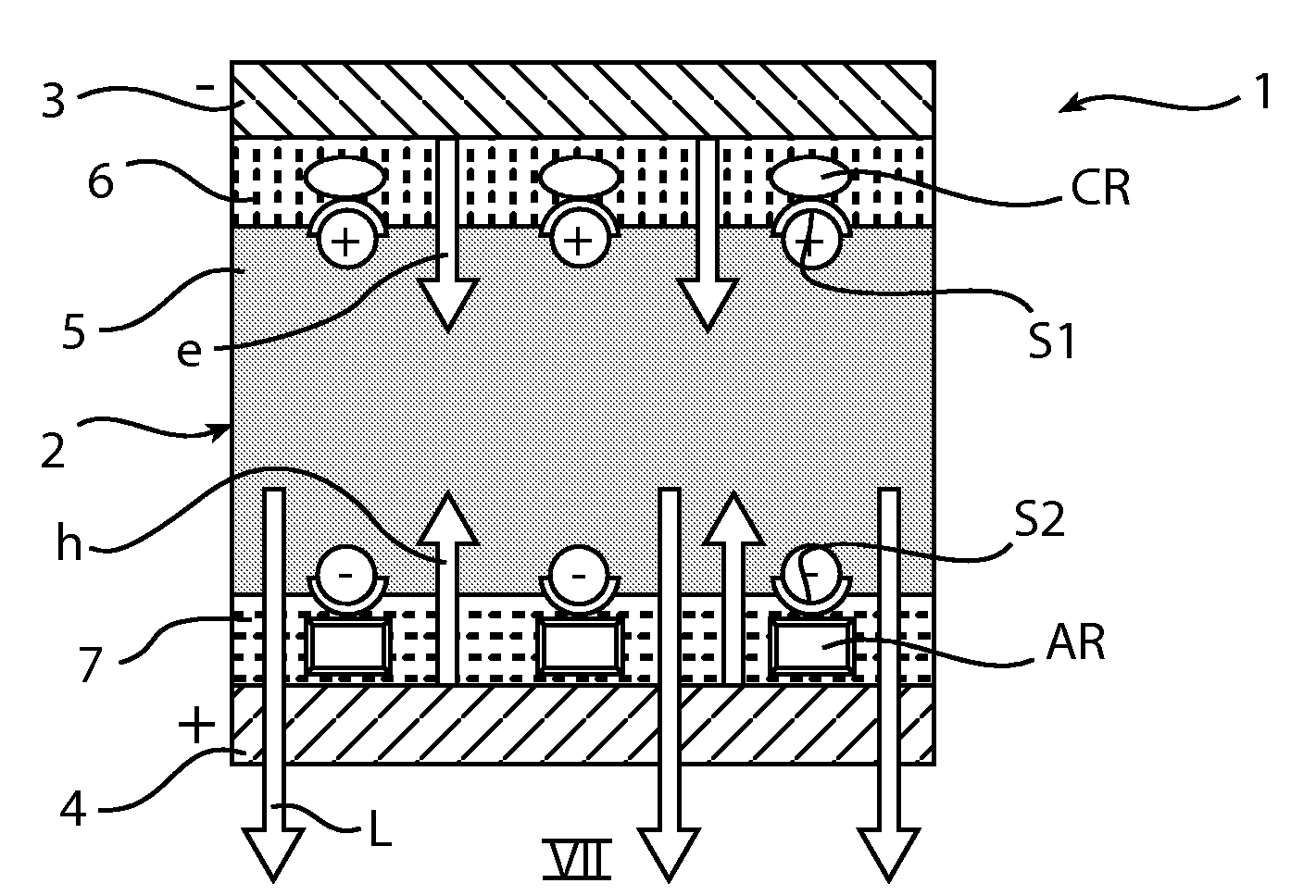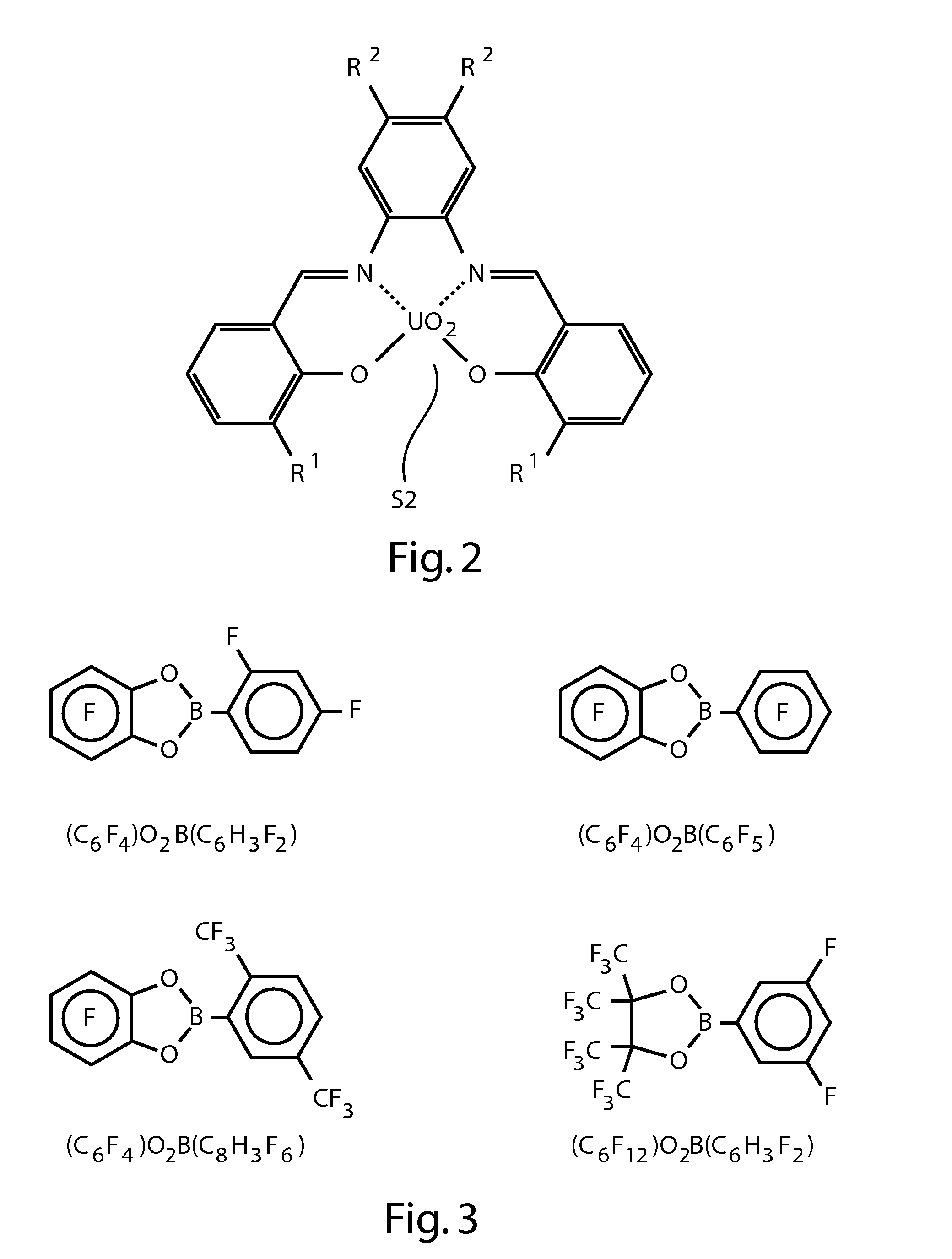Polymer Light-Emitting Diode
a light-emitting diode and polymer technology, applied in the direction of discharge tube/lamp details, luminescent screen of discharge tube, thermoelectric device, etc., can solve the problems of difficult to match with the work function of anode and/or cathode, and achieve low sensitivity to high temperature, long expected life, and quick response
- Summary
- Abstract
- Description
- Claims
- Application Information
AI Technical Summary
Benefits of technology
Problems solved by technology
Method used
Image
Examples
Embodiment Construction
[0037]FIG. 1 shows a light-emitting diode 1 according to the invention. The diode 1 has a laminate structure 2 and comprises a first electrode 3, a second electrode 4 and, positioned between the first electrode 3 and the second electrode 4, a light-emitting layer 5. The diode 1 is provided on a substrate (not shown in FIG. 1), which provides the diode 1 with mechanical support and includes the connections for the electrodes 3, 4.
[0038]The first electrode 3 works as a cathode when the diode 1 is subjected to an electrical field in forward bias. The first electrode 3 is made from a high work function material, for example gold, silver, aluminium or indium tin oxide (ITO). Examples of other alternative electrode materials could be found in, for example, the U.S. Pat. No. 5,682,043 granted to Pei et al. describing light-emitting electrochemical cells in general.
[0039]The second electrode 4 works as an anode when the diode 1 is subjected to an electrical field in forward bias. The second...
PUM
 Login to View More
Login to View More Abstract
Description
Claims
Application Information
 Login to View More
Login to View More - R&D
- Intellectual Property
- Life Sciences
- Materials
- Tech Scout
- Unparalleled Data Quality
- Higher Quality Content
- 60% Fewer Hallucinations
Browse by: Latest US Patents, China's latest patents, Technical Efficacy Thesaurus, Application Domain, Technology Topic, Popular Technical Reports.
© 2025 PatSnap. All rights reserved.Legal|Privacy policy|Modern Slavery Act Transparency Statement|Sitemap|About US| Contact US: help@patsnap.com



